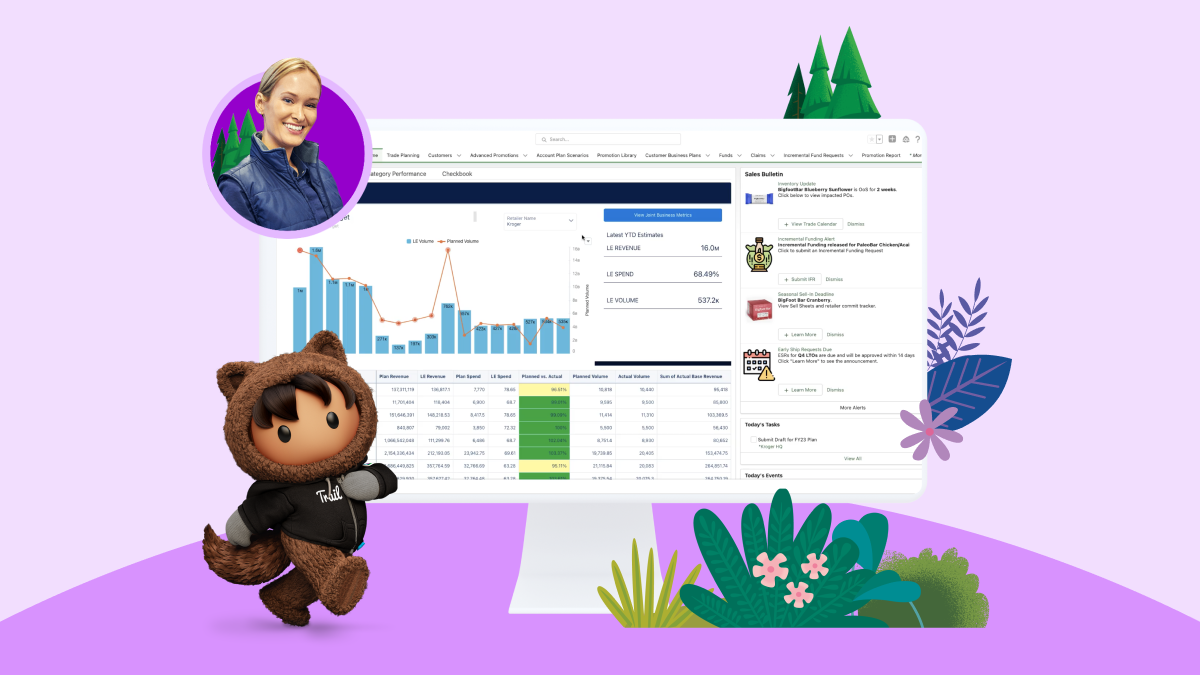Boost Revenue and Growth with Modern Trade Promotion Management Guide.
Billions in trade spend goes unevaluated every year. Are you getting your money’s worth?

Despite huge budgets, 72% of promotions won’t break even.
Consumer goods (CG) companies can unlock a bigger return on their trade spend investment if they can spot and scale their most profitable programs quickly. The answers lie in their data, but right now, promotions are so cumbersome to track that billions in spending goes unevaluated. In fact, 60% of businesses rely on spreadsheet-driven processes that don’t use real-time data, don’t connect with AI-driven analysis, and are difficult to manipulate at the account level.
To keep up in the face of stiff industry headwinds, businesses must keep their key account managers focused on building strategic partnerships instead of updating or investigating promotions. The good news is you can take control of your trade spend investment with the right digital tools.

Chapter 1: 4 challenges solved by digitising TPM.
Create transparency and add the value that retailers expect.
Even though trade spend is the second largest expense item — after the cost of goods sold — 60% of trade promotions go unevaluated because employees don’t have the tools or enough time. At the same time, margin-pressured retailers are demanding more visibility. CG companies want to maximise their return on billions of dollars of spend: They need to quickly replicate and scale the most successful programs, change or stop the unprofitable ones, and ensure they all stay on budget and within promotion guardrails.
Joint business planning enables CG companies and retailers to target investments at the store and channel level. That sounds simple enough. But the challenge for retailers and CG companies is that omni-channel selling has made the route to market much more complicated. Suddenly, CG companies aren’t just building a relationship with one buyer — they’re working with multiple partners across virtual and in-person teams. Using a spreadsheet to keep track of promotions in real time across regions, locations, and selling channels isn’t just cumbersome and slow — it’s impossible. And manual processes keep promotions from being as effective as possible, because organisations are unable to identify what’s working (and what’s not) without real-time, dynamic data.
To meet heightened retailer expectations and get the most value from their trade spend investments, CG companies should reevaluate their trade promotion management (TPM) capabilities. Through digitisation, CG companies and retailers can meet TPM’s challenges head-on and create win-win promotions that maximise ROI.
Challenge #1: The route to market is getting more complicated
One-size-fits-all promotions don’t meet the needs of omni-channel retailers. Just like online promotions don’t always work in-store, other factors, like seasonality, play an outsized role. Today, companies that can target promotions by channel, region, or even store level will be best positioned to get their products in the hands of customers.
Digitising TPM data enables companies to get more granular with the promotions they offer. Suddenly, retailers and CG companies can tailor trade spend to specific regional or seasonal needs, for example, offering a discount on beach towels in springtime.
Challenge #2: Manual tracking is cumbersome and inhibits collaboration
If you’ve ever spent time designing and populating a complicated spreadsheet, you know it’s a slow process. Limited file permissions means team members don’t have access to data when they need it. Updating is tricky because it’s easy to make mistakes. Because spreadsheets don’t dynamically populate with real-time data, the document is stale as soon as you hit save.
When you digitise trade management, you only have to enter in program parameters once. You can link real-time data across disparate sources and use the calendar view to deliver visibility to your full team, ensuring everyone has access to one single source of truth.
Challenge #3: Analysing trade spend efficiency is too hard

60% of trade promotions go unevaluated due to lack of analytical rigour and staffing.
Challenge #4: Replicating successful promotions takes too long
With a spreadsheet, it isn’t possible to replicate trade spend models or easily find which are the most profitable. Instead, you have to start from scratch, resulting in rework that wastes time.
Digitising trade promotion management means you don’t have to burn hours recreating the wheel. That frees up time for key account managers to build the strategies and relationships that enable joint planning and drive profits. It also enables AI-driven analysis and automated reporting, making it faster for account managers to discover high-performing promotions.
Find out how optimising TPM helps finance teams stay agile.

- Improved visibility into spending
- Accurate reporting with real-time data
- Guardrails that flag (and prohibit) trade overspend
Explore more resources to help you reach all your goals.

Report
FMCG brands and the (other) waste crisis.

Demo
Optimise Trade Spend with Consumer Goods Cloud.

Overview
Consumer Goods: Connected CRM Solutions.
Do you have questions? We help you on your way.
Ask about our products, prices, implementation or anything else. Our experts are ready for you.




